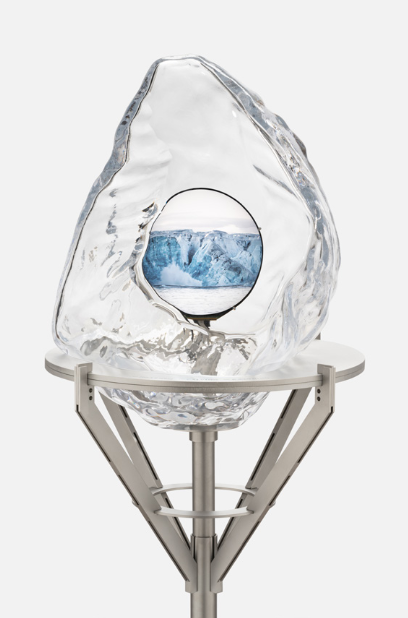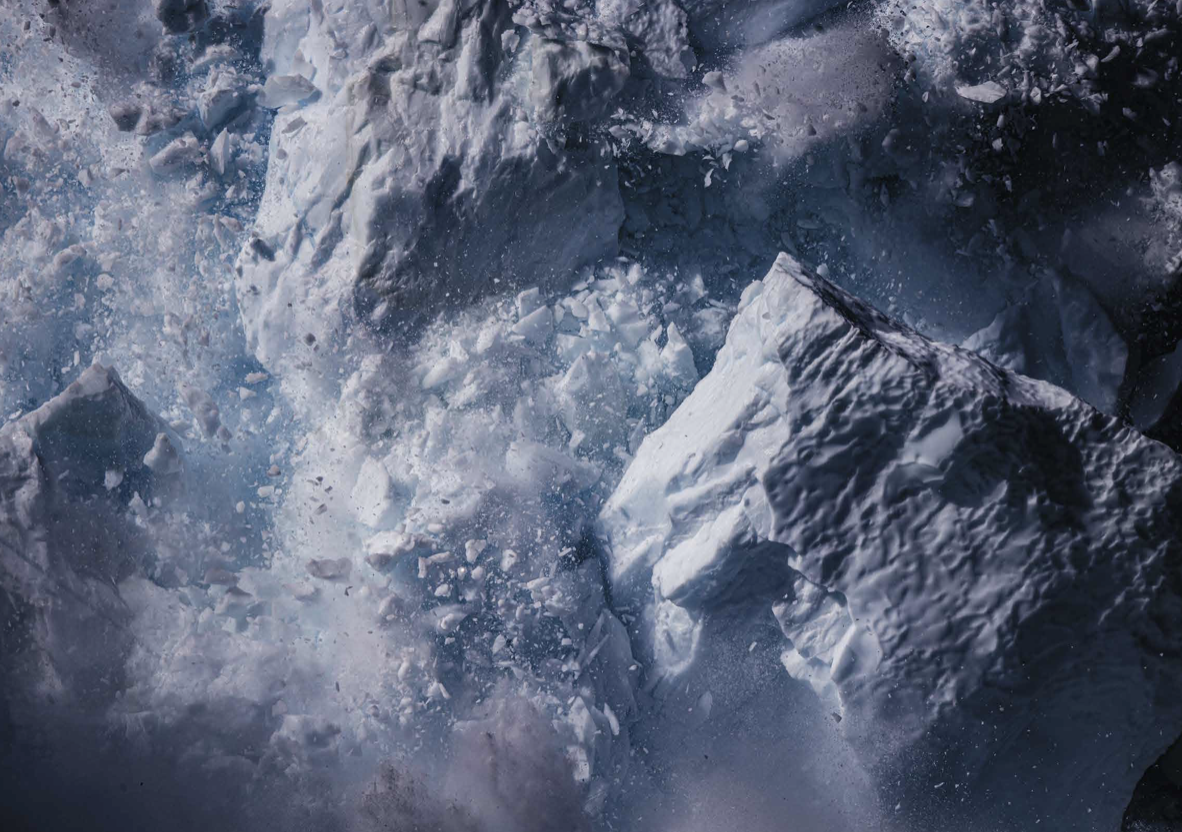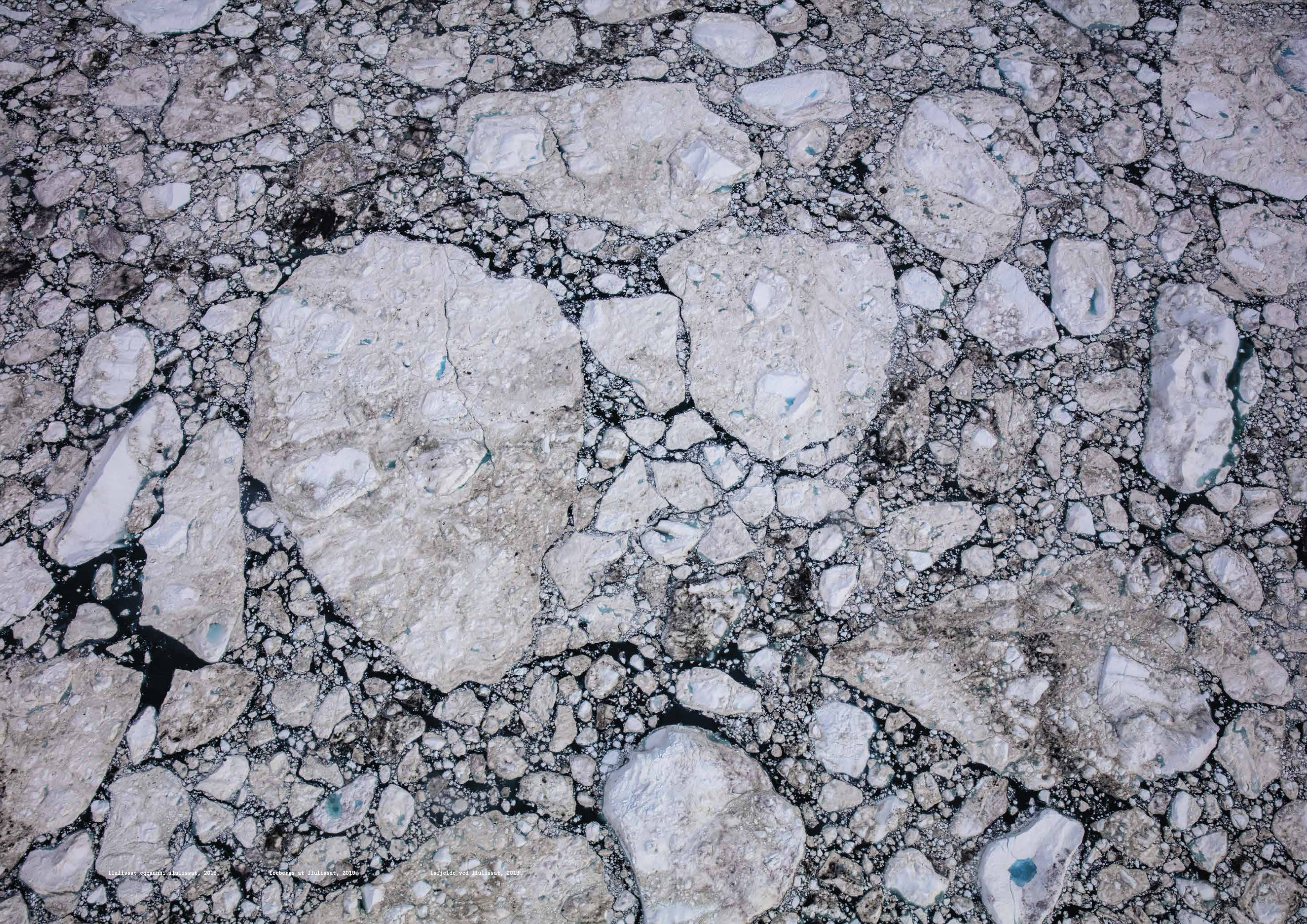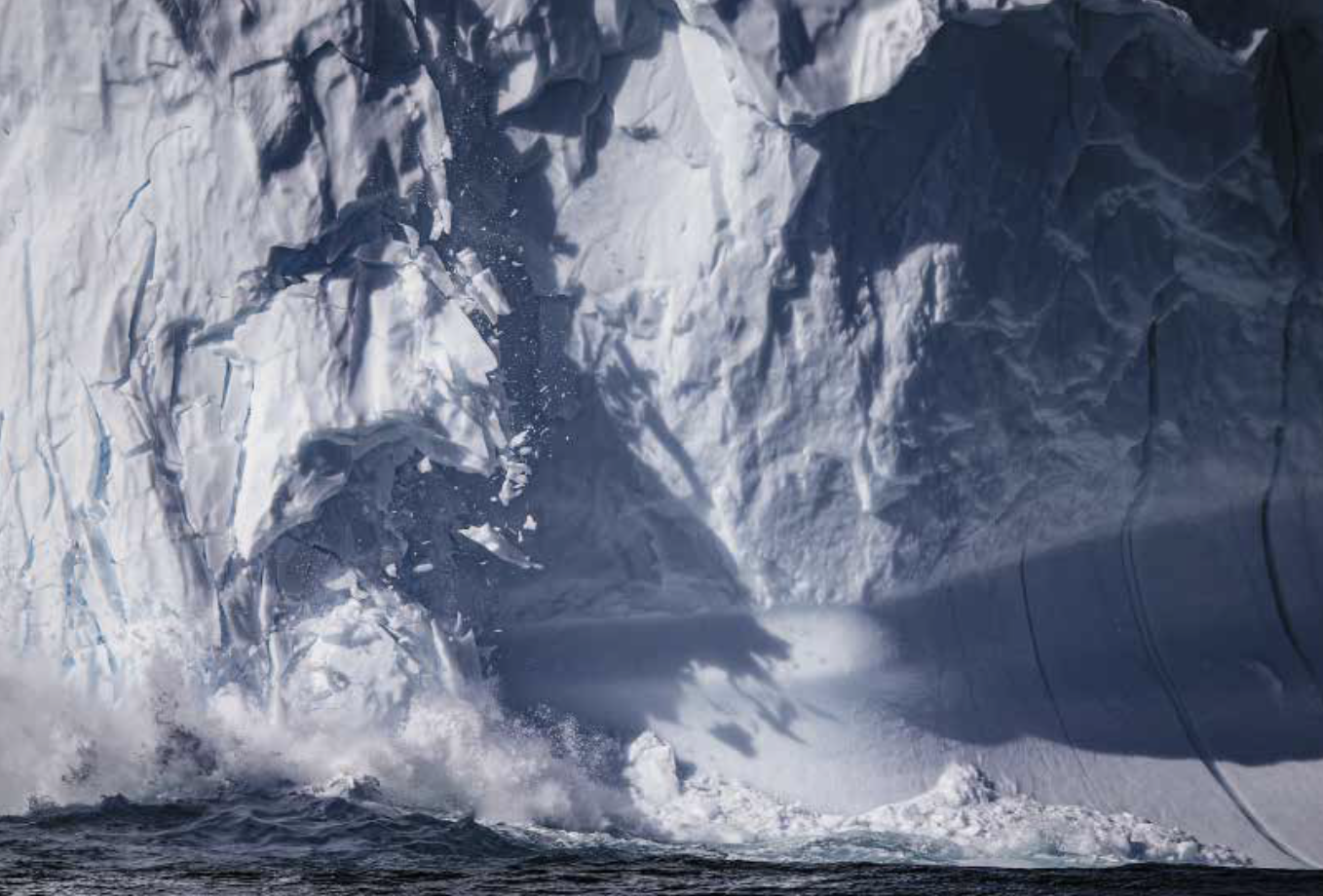CALVING

- Why does Sermeq Kujalleq calve?
- The journey of an iceberg through the Icefjord
- 10% of the icebergs from Greenland’s ice sheet calve from Sermeq Kujalleq
- Calving creates huge waves
You solve the tasks by using
- Text
- Audio
- Drawing tools
- Images
In the book you can find more information about the subject.
When a glacier calves, icebergs of different sizes break off from the front.
The icebergs float with the ocean streams into the world.

How is the pressure created that makes the bottommost ice move?
What is high tide and low tide?
Do you know the concept calving from elsewhere?
The icebergs calved from the glacier Sermeq Kujalleq travel on through the Icefjord.
In the picture you see an iceberg on its way through the Icefjord.

At the mouth of the Icefjord is a moraine. What is a moraine?
How do the icebergs get past the moraine?
What does the model on page 46 show?
Here you see an aerial photograph of the icebergs at Ilulissat 2019.
The glacier calves about 40 to 50 km³ each year.
It is one of the fastest in the world.

If the glacier moves 40 metres a day, how much does it move in a year?
If the 70 tonnes of ice floating through the Icefjord each day were melted, it could cover the yearly watersupply of the USA.
Could all this ice be used for something somehow?Sermeq Kujalleq is the fastest glacier on the northern hemisphere. What other glaciers are there? Use the Internet.
As it is not known exactly when the glacier calves or an iceberg turns around, it can be dangerous to be on the sea or at the coast in Ilulissat.

On pages 54-55 are four pictures with a kayak. What do they show?
What is a tsunami?
Are there other places in the world where tsunamies may hit?
When a glacier calves, icebergs of different sizes break off from the front.
The icebergs float with the ocean streams into the world.

How is the pressure created that makes the bottommost ice move?
What is high tide and low tide?
Do you know the concept calving from elsewhere?
The icebergs calved from the glacier Sermeq Kujalleq travel on through the Icefjord.
In the picture you see an iceberg on its way through the Icefjord.

At the mouth of the Icefjord is a moraine. What is a moraine?
How do the icebergs get past the moraine?
What does the model on page 46 show?
Here you see an aerial photograph of the icebergs at Ilulissat 2019.
The glacier calves about 40 to 50 km³ each year.
It is one of the fastest in the world.

If the glacier moves 40 metres a day, how much does it move in a year?
If the 70 tonnes of ice floating through the Icefjord each day were melted, it could cover the yearly watersupply of the USA.
Could all this ice be used for something somehow?Sermeq Kujalleq is the fastest glacier on the northern hemisphere. What other glaciers are there? Use the Internet.
As it is not known exactly when the glacier calves or an iceberg turns around, it can be dangerous to be on the sea or at the coast in Ilulissat.

On pages 54-55 are four pictures with a kayak. What do they show?
What is a tsunami?
Are there other places in the world where tsunamies may hit?



